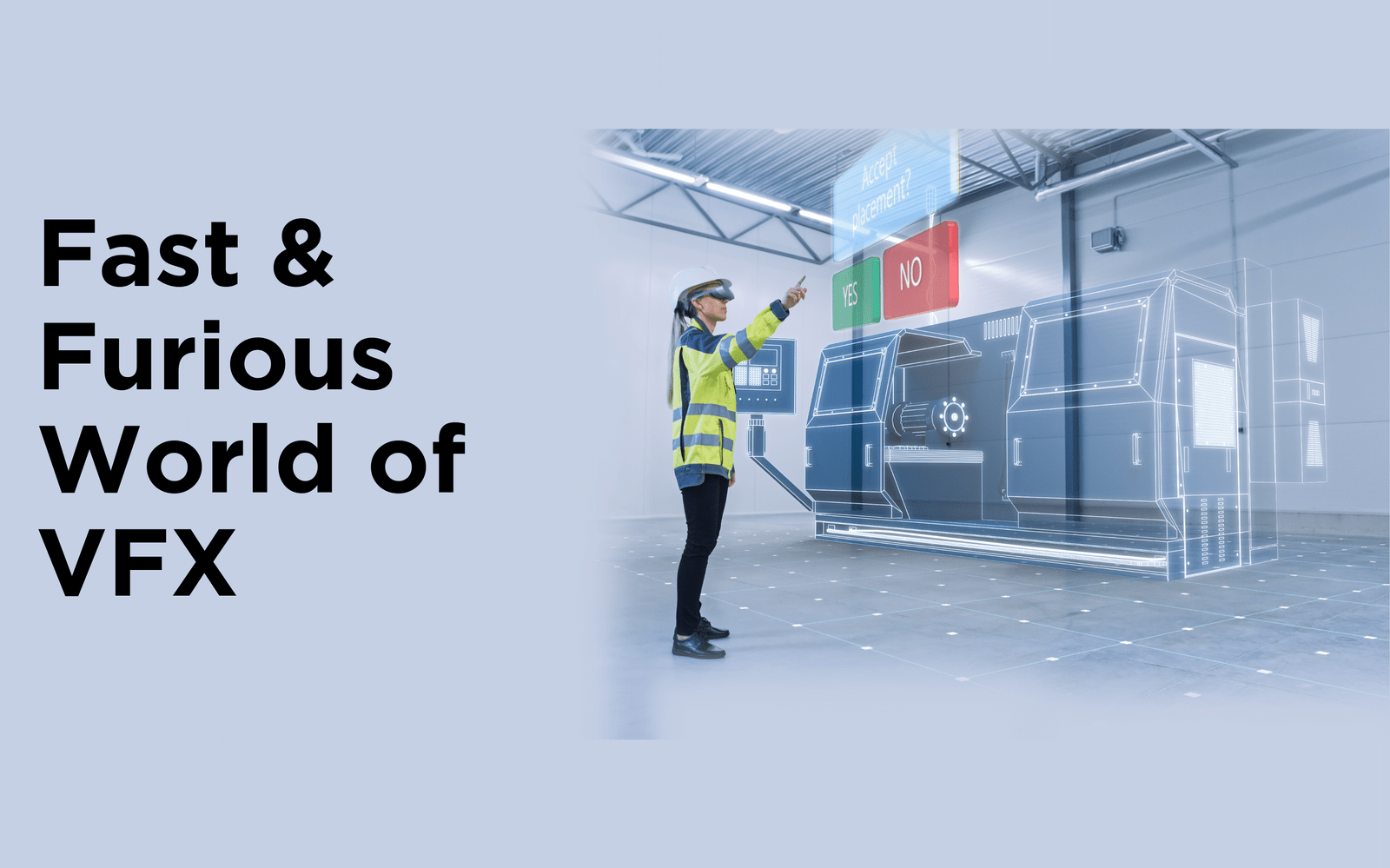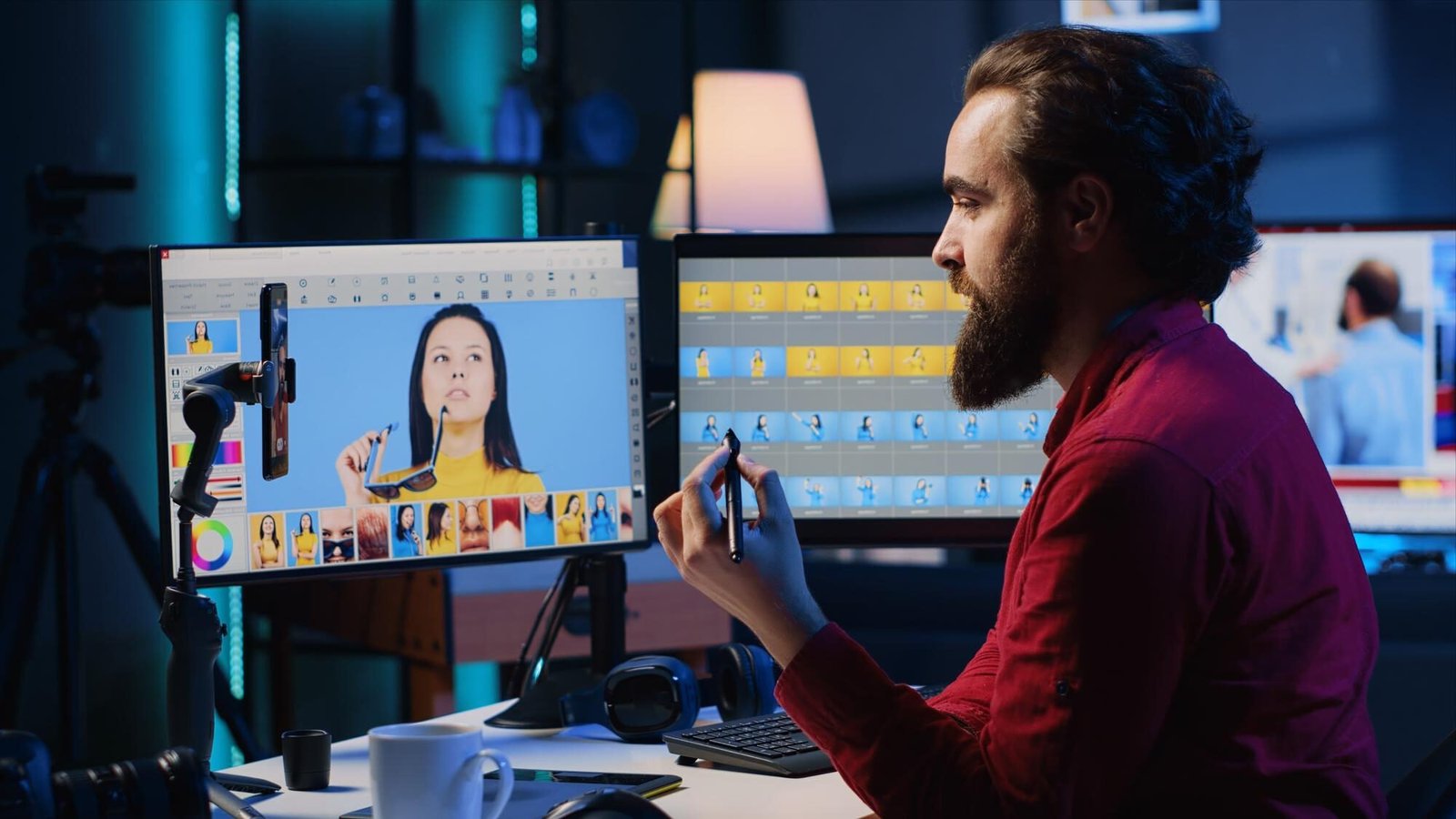
The Fast and Furious World of VFX: Racing to Visual Effects Excellence
The Fast and Furious World of VFX: Racing to Visual Effects Excellence
Step into the fast and furious world of VFX, where exhilaration and adrenaline meet visual effects excellence. In an industry that constantly seeks to push the boundaries of creativity and realism, VFX artists race against time to deliver mind-blowing visuals that captivate audiences. From explosions and car chases to incredible creature creations, the cinematic magic of visual effects lies at the heart of unforgettable movie experiences.
With every frame meticulously crafted, VFX artists combine artistry and technical prowess to seamlessly integrate computer-generated images into live-action footage. Behind the scenes, cutting-edge software and hardware play a crucial role in transforming visions into breathtaking reality. Embracing innovation and staying up-to-date with the latest tools and techniques, these artists take this dynamic industry to new heights.
Join us as we delve into the thrilling world of VFX and explore the groundbreaking work of the unsung heroes who bring imagination to life. From the studio to the silver screen, witness firsthand the intense race for visual effects excellence that continues to captivate and awe audiences worldwide.
Evolution of VFX in the film industry
The evolution of visual effects in the film industry has been nothing short of remarkable. From the early days of practical effects to the digital revolution, VFX has come a long way. In the past, filmmakers relied heavily on physical props, miniatures, and camera tricks to create visual illusions. However, the advent of computers and digital technology changed the game forever.
The breakthrough moment for VFX came with the release of “Star Wars” in 1977. Directed by George Lucas, this iconic film showcased the potential of computer-generated imagery (CGI) in creating otherworldly environments and creatures. The success of “Star Wars” paved the way for the integration of VFX into mainstream cinema, and the industry has never looked back.
Over the years, advancements in computer processing power, software development, and digital imaging techniques have revolutionized the field of VFX. From the introduction of 3D modeling and animation to the birth of motion capture technology, each innovation has opened up new possibilities for filmmakers and VFX artists alike. Today, the boundaries between reality and the virtual world have become increasingly blurred, thanks to the relentless pursuit of visual effects excellence.
Importance of VFX in movies
Visual effects play a crucial role in the success of modern movies. From blockbuster action films to fantasy epics, VFX has become an integral part of the storytelling process. It allows filmmakers to transport audiences to unimaginable worlds, create breathtaking action sequences, and bring fantastical creatures to life.
One of the primary reasons VFX is so important in movies is its ability to enhance the visual narrative. Whether it’s adding explosions, creating realistic environments, or manipulating time and space, visual effects can elevate the cinematic experience to new heights. They have the power to immerse viewers in a way that practical effects alone cannot achieve.
Moreover, visual effects can also be used to solve practical challenges during production. For example, if a scene requires dangerous stunts or impossible camera angles, VFX can be employed to ensure the safety of the cast and crew. It allows filmmakers to push the boundaries of what is physically possible without compromising on the vision or risking lives.
In addition to their creative and practical applications, visual effects also contribute significantly to the financial success of movies. Blockbuster films with stunning VFX often attract larger audiences, resulting in higher box office revenues. As a result, studios and filmmakers are willing to invest substantial resources in visual effects to create visually spectacular films that capture the imagination of audiences worldwide.
VFX techniques and tools
The world of visual effects is a fascinating blend of artistry and technology. VFX artists employ a wide range of techniques and tools to bring their creative visions to life. Let’s take a closer look at some of the key techniques and tools used in the field of VFX.
One of the fundamental techniques used in VFX is compositing. Compositing involves combining multiple visual elements, such as live-action footage, CGI, and special effects, to create a seamless final image. This process requires precise attention to detail, color grading, and matching the lighting and perspective of each element. Software like Adobe After Effects and Nuke are commonly used for compositing tasks.
Another essential technique in VFX is 3D modeling and animation. This involves creating three-dimensional digital models of objects, characters, and environments. These models are then animated and integrated into live-action footage. Software such as Autodesk Maya and Cinema 4D are widely used for 3D modeling and animation.
Additionally, visual effects artists rely heavily on simulation and dynamics tools. These tools allow them to create realistic simulations of natural phenomena, such as fire, water, and cloth. By accurately capturing the physics and behavior of these elements, VFX artists can seamlessly blend them into the live-action footage. Software like Houdini and RealFlow are popular choices for simulation and dynamics.
Furthermore, motion capture technology has revolutionized the way VFX artists bring realistic human movements to digital characters. By capturing the motion of actors using specialized sensors and cameras, VFX artists can translate their performances onto digital characters with remarkable accuracy. This technique has been used in numerous films, including the “Lord of the Rings” trilogy and the “Planet of the Apes” series.
These are just a few of the many techniques and tools used in the field of VFX. With each passing year, new software and hardware advancements continue to push the boundaries of what is possible, enabling VFX artists to create increasingly breathtaking visuals.
VFX in action: Examples from popular movies
VFX is an integral part of modern filmmaking, enhancing the visual storytelling and creating immersive worlds that transport audiences to new realms. From the Marvel Cinematic Universe to epic sci-fi adventures, VFX artists have brought to life some of the most iconic moments in cinema history.
One such example is the “Avengers: Endgame” movie, where VFX played a crucial role in depicting the colossal battle scenes and bringing the superheroes’ powers to life. The intricate detail and seamless integration of computer-generated effects with live-action footage were essential in creating the grand spectacle that dazzled audiences worldwide.
Another notable example is the “Fast and Furious” franchise, which thrives on high-octane action and jaw-dropping stunts. VFX artists work tirelessly to enhance the practical effects, seamlessly blending real cars and explosive action with computer-generated imagery. The result is a thrilling cinematic experience that pushes the boundaries of what’s possible on-screen.
In the realm of fantasy, movies like “The Lord of the Rings” trilogy have relied heavily on VFX to create immersive worlds filled with fantastical creatures and breathtaking landscapes. From the majestic cities of Middle-earth to the fearsome armies of orcs, the VFX artists behind these films have showcased their immense talent in bringing the pages of J.R.R. Tolkien’s novels to life.
Challenges faced by VFX artists
While the end result of VFX in movies is often awe-inspiring, the journey to achieving visual effects excellence is not without its challenges. VFX artists face numerous obstacles in their pursuit of creating realistic and visually stunning imagery.
One of the primary challenges is the tight deadlines and demanding schedules that VFX artists have to work with. Movie productions often have strict release dates, leaving little room for error or delays in the VFX pipeline. Artists have to work efficiently and effectively to meet these deadlines while maintaining the highest quality standards.
Another significant challenge is the constant need to innovate and stay up-to-date with the latest trends and technologies in the VFX industry. As technology evolves, so do the expectations of audiences. VFX artists must continuously learn and adapt to new software, tools, and techniques to stay ahead of the curve. This requires a commitment to lifelong learning and a passion for pushing the boundaries of what’s possible.
Additionally, the collaborative nature of VFX work can present its own set of challenges. VFX artists often work in teams, collaborating with directors, cinematographers, and other crew members to achieve the desired visual effects. Effective communication and teamwork are crucial to ensure that everyone is on the same page and working towards a common vision.
The future of VFX: Emerging trends and technologies
As technology advances at an unprecedented pace, the future of VFX holds exciting possibilities. Emerging trends and technologies are set to revolutionize the way visual effects are created and experienced.
One such trend is the rise of virtual reality (VR) and augmented reality (AR) in the world of VFX. These immersive technologies offer new avenues for storytelling and audience engagement, allowing viewers to experience movies in a more interactive and immersive manner. VFX artists will need to adapt their skills to create compelling visual effects that seamlessly integrate with these new platforms.
Another emerging technology that holds great potential for VFX is real-time rendering. Traditionally, rendering high-quality visual effects has been a time-consuming process, often requiring hours or even days to generate a single frame. Real-time rendering technologies, such as Unreal Engine and Unity, enable artists to see instant feedback and make adjustments on the fly. This real-time workflow enhances creativity and productivity, enabling VFX artists to iterate and refine their work more efficiently.
Furthermore, artificial intelligence (AI) is poised to play a significant role in the future of VFX. AI-powered tools can streamline certain aspects of the VFX workflow, such as rotoscoping, motion tracking, and even character animation. This integration of AI can free up artists’ time, allowing them to focus on more creative tasks and pushing the boundaries of their craft.
VFX career paths and opportunities
The world of VFX offers a wide range of career paths and opportunities for aspiring artists. From 3D modeling and animation to compositing and digital matte painting, VFX encompasses various disciplines that require specialized skills and expertise.
One common career path in VFX is that of a 3D artist. 3D artists use software like Maya or Blender to create realistic and detailed digital models, textures, and animations. They bring life to characters, creatures, and environments, ensuring that every detail is meticulously crafted to achieve the desired visual effect.
Another career path is that of a compositing artist. Compositing artists take the various elements of a shot, such as live-action footage, CG renders, and visual effects, and blend them together seamlessly. They use software like Nuke or After Effects to create the final composite, ensuring that the visual effects integrate seamlessly with the live-action footage.
Additionally, there are opportunities in areas like motion tracking, matte painting, and simulation. Motion tracking artists analyze footage and track the movement of objects or characters, allowing for precise integration of visual effects. Matte painters create digital paintings that serve as backgrounds or extensions of real-world sets. Simulation artists use software like Houdini to create realistic simulations of natural phenomena like fire, water, or cloth.
VFX studios and their notable works
VFX studios around the world play a crucial role in shaping the visual effects landscape. These studios bring together talented artists, cutting-edge technology, and a passion for visual storytelling to deliver breathtaking visual effects that leave audiences in awe.
One such studio is Industrial Light & Magic (ILM), founded by George Lucas in 1975. ILM has been at the forefront of visual effects innovation for decades, with groundbreaking works in movies like “Star Wars,” “Jurassic Park,” and “The Avengers.” Their dedication to pushing the boundaries of what’s possible in VFX has earned them numerous awards and accolades.
Another notable studio is Weta Digital, based in New Zealand. Weta Digital has worked on iconic films like “The Lord of the Rings” trilogy, “Avatar,” and “The Avengers.” Their exceptional attention to detail and commitment to realism have made them a powerhouse in the world of VFX.
Other renowned studios include Framestore, known for their work on movies like “Gravity” and “Guardians of the Galaxy,” and MPC (Moving Picture Company), whose credits include “The Jungle Book” and “Harry Potter and the Deathly Hallows.”
In conclusion, the world of VFX is a fast-paced and exhilarating industry where artists race against time to deliver visual effects excellence. From creating awe-inspiring explosions to crafting fantastical creatures, VFX artists combine artistry and technical prowess to bring imagination to life. Despite the challenges they face, VFX artists continue to push the boundaries of what’s possible, embracing new technologies and trends to create unforgettable movie experiences. So the next time you watch an action-packed blockbuster or get lost in a fantastical world, remember the unsung heroes behind the scenes who make it all possible.

